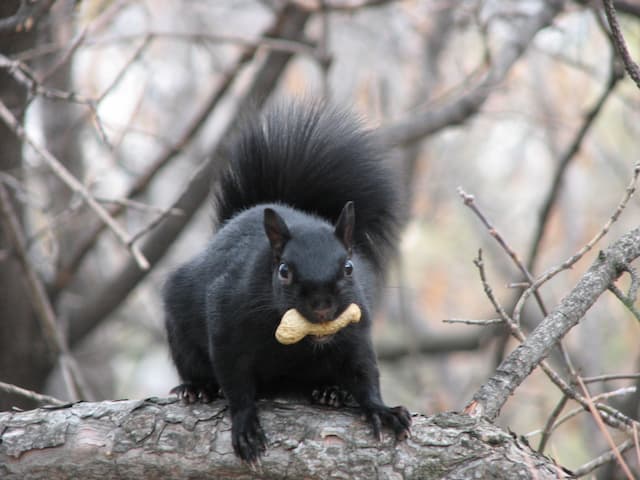The Eastern Gray Squirrel – also known by its scientific name, Sciurus carolinensis – is mostly found in urban and suburban areas of North America though it originated from the Midwestern United States. It is mostly found on bare branches, derelict nests made by birds or hollow branches of trees. These are the favourite areas that constitute the habitat of the Eastern Gray Squirrel.
It is not a hard rodent to spot. It has a rather large bushy tail that performs diverse functions such as maintaining balance as it sprints between branches, keeping warm during the bitter cold in winter and distracting its predators which are the Red fox, snakes and raccoon. The tail is around 20 to 23 cm in length. Despite its name, this animal is not really gray in colour. They are a motley of black, brown and white; making this animal an attractive rodent.
The gray fur is dominant in black and gray species which are the most predominant squirrels. However, in some cases it may have a reddish colour, though, this is not so common. Its body is around 23 to 28 cm in length and weighs approximately 350 to 550 grams.
When it comes to their feeding habits, this rodent is quite an opportunist, this enables it to adapt to any environment. During springtime, Eastern Gray Squirrel feeds on hardwood trees, when it warms up in summer, their diet changes to winged seeds of maple, berries and wild fruit. When autumn hits, they feed on hard nuts, pine seeds, hickory nuts and butternuts Their main diet, however, constitutes walnuts, various fungi found in forests, acorns, seeds and barks of trees. During these seasons, this squirrel is aided by the adaptations that enable it to feed all through the year.
It has sharp claws that enable it to grip things and ascend trees easily. Its sharp incisor teeth crack nuts with certain surgical precision, but grow constantly throughout the year and therefore need to be sharpened by gnawing on various objects.
The Eastern Gray Squirrel is most active during the daytime. It is during this time that these furry rodents hoard vast amounts of food for the future. They have an acute sense of smell and spatial memory that enables them to determine the location of their catch and make landmarks to recover them later on. Additionally, they are inquisitive, aggressive and watchful rodents, making them very unique squirrels.

